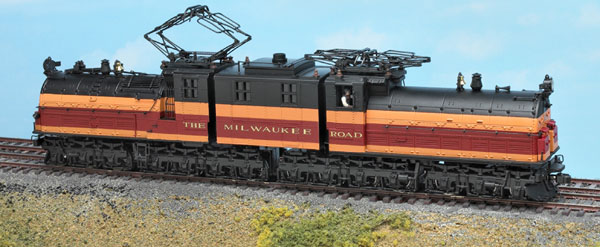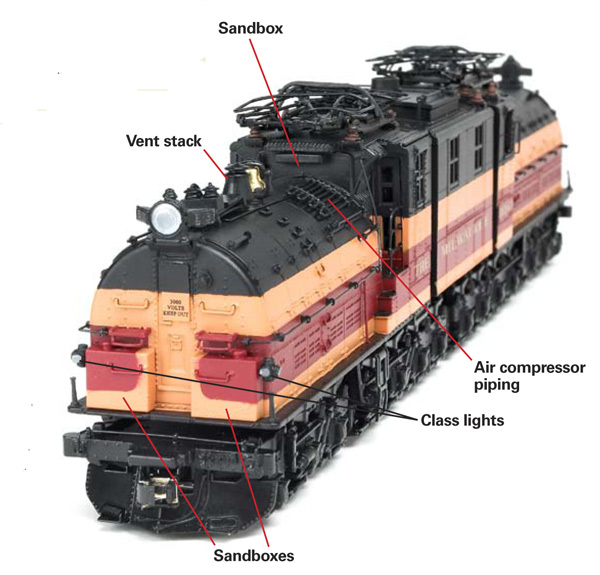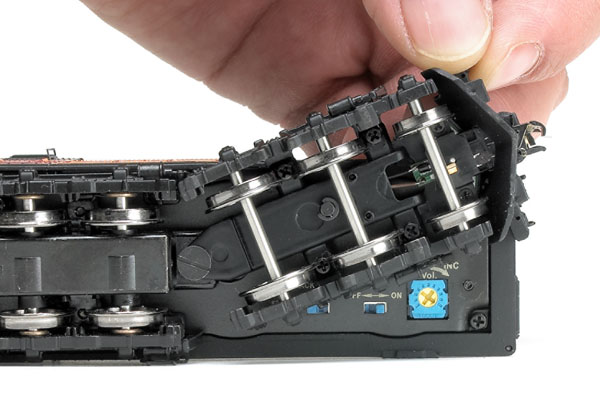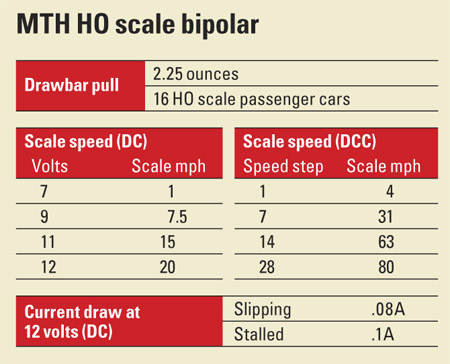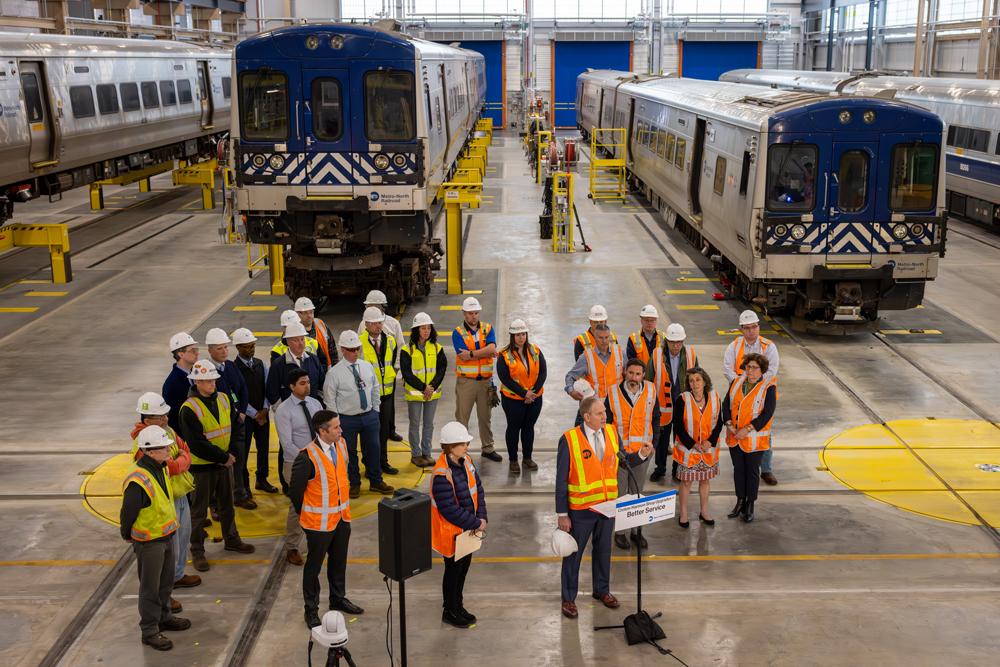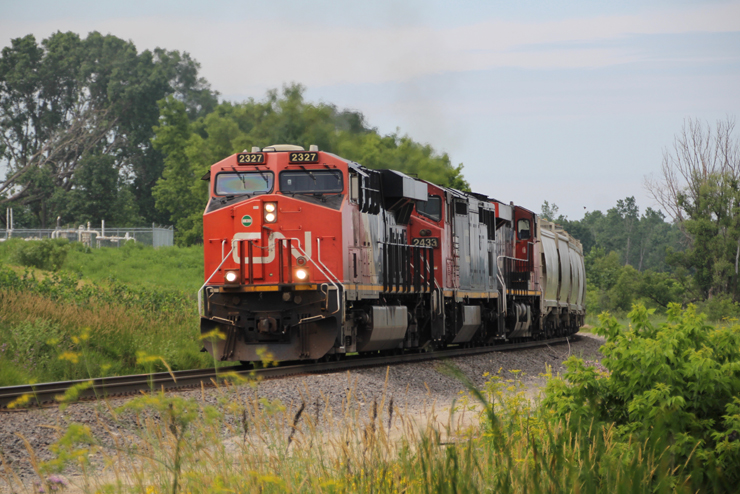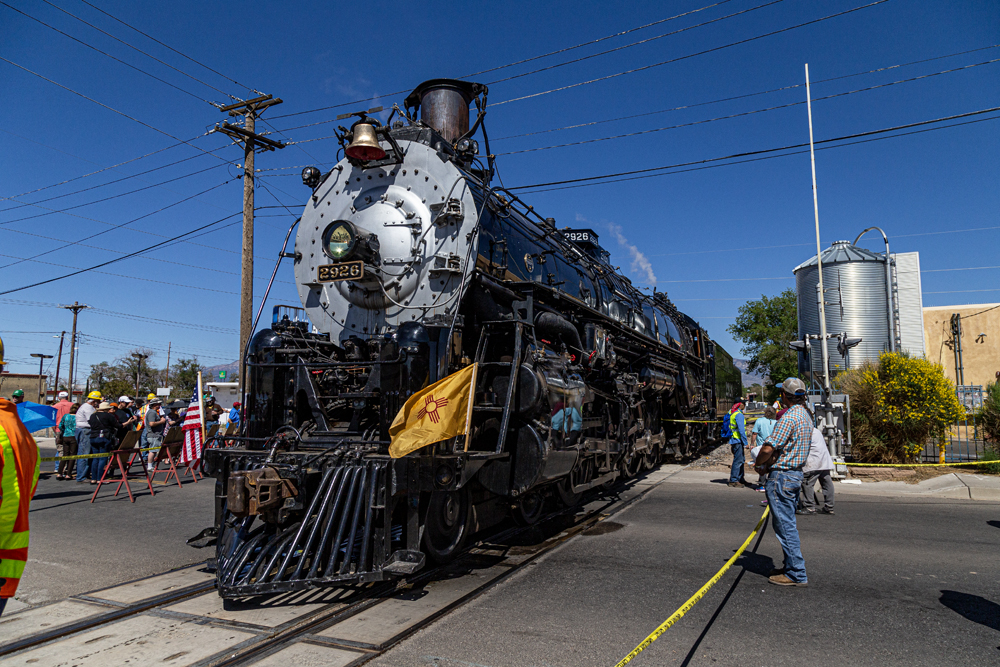includes MTH’s proprietary Digital Command System (DCS). The MTH bipolar will operate on DC and Digital Command Control (DCC) layouts as well as those controlled by DCS.
Prototype. General Electric delivered five 265-ton electric locomotives to the Chicago, Milwaukee & St. Paul Ry. in 1919. (The railroad added “Pacific” to its name in 1927.) The locomotives were called “bipolars” because each of the 12 traction motors had only two field poles. The 3,200 hp gearless locomotives were known for quick acceleration and pulling power. The Milwaukee Road class designation for the bipolars was EP-2.
For most of their careers the bipolars hauled regular passenger trains on the Milwaukee’s Coast Division in Washington state. The locomotives were head-end power for the Olympian and the streamlined Olympian Hiawatha.
In the late 1950s the Milwaukee transferred the bipolars to the Rocky Mountain Division. The locomotives were retired and scrapped in 1960. One bipolar is preserved at the Museum of Transportation in St. Louis, Mo. For more information see The Milwaukee Electrics by Noel T. Holley (Hundman Publishing Co., Inc.)
On the prototype, the B end had the air compressor and its external piping. Although the bipolar had two cabs and could run in either direction, the railroad preferred that it run with the A end toward the front, since only the A end cab had kilowatt hour meters. The MTH model is configured to run with the B end toward the front when the model is moving forward. The model also has non-operating class lights on the B end.
The die-cast metal shell of the bipolar models the three-piece articulated body of the prototype. The two end sections are rigidly attached to four-axle trucks. The center section, which on the prototype housed a boiler for passenger train heat, is connected to the end sections but not the trucks. The three-axle pilot trucks pivot independently.
Rubber diaphragms separate the body sections on the model. Some of the handrails on the hoods are molded in the body, but most of the hand rails and hand grabs are separate parts. The pantographs are made of metal. Each cab has a single engineer figure, but no fireman. The paint on our model is crisp and opaque with sharp separation between colors.
Both four-axle D trucks are powered. None of the wheels have traction tires.
Pantographs and couplers. The operating pantographs automatically raise and lower according to the model’s direction using DC, DCC, or DCS. When the model is moving forward the trailing pantograph is raised, as on the prototype. When the direction of the locomotive is reversed, the front pantograph raises then the trailing pantograph lowers. The pantographs can be individually raised or lowered regardless of the model’s direction of travel using a DCC or DCS system.
The remotely opening couplers can be triggered using DCC or DCS. This feature worked reliably using either system. Because of the spring tension required for this feature, the bipolar had to be moving at 20 scale mph in order for the locomotive’s coupler to engage that of a car and close the knuckles. On the prototype, such a speed would be quite jarring for passengers.
I tested the model in DC using a Model Rectifier Corp. Tech 4 power pack. At 12 volts the bipolar ran at 20 scale mph, and at the power pack’s maximum output of 15 volts, the model moved at 57 scale mph, which is close to the prototype’s allowed speed limit. Although GE stated the bipolar’s top speed as 90 mph, the Milwaukee limited its speed to 60 mph.
When I ran the model with an NCE DCC system and an MTH DCS system, the bipolar achieved a top speed of 80 scale mph. After I set the bipolar to 128 speed steps in DCC, the model moved steadily at 1 scale mph in speed step 1. Controlled by the DCS system, the model started at 1 scale mph and accelerated in 1 scale mph increments.
Running light or leading a passenger train, the model ran through no. 6 yard ladder turnouts without difficulty. The bipolar can handle an 18″ curve, although this is too tight for many scale model passenger cars.
On level track the bipolar can single-handedly haul 16 passenger cars at speed. On a three percent grade the model pulled seven passenger cars without slipping.
Sounds and programming. The bipolar features sound effects in DC, DCC, and DCS modes. In DC the sounds are limited to automatic effects like the blowers and random air releases. Squealing brakes sounded when I rapidly decreased the throttle. More sounds, including many user-triggered effects, are available when running the model on a DCC- or DCS-controlled layout.
In DCC or DCS, the model’s 29 user triggered effects include the headlights, bell, horn, and coupler sounds. You can trigger a four-part passenger and arrival sequence for a Olympian Hiawatha
arriving in Seattle. It would sound more realistic if these announcements didn’t come from the locomotive.
Although you can control the overall volume level, individual effect volume levels can’t be controlled by configuration variables. The only configuration variables available program the locomotive address, acceleration and deceleration rates, and resetting the model’s electronics to factory defaults. The MTH model supports only programming on the main.
For anyone modeling the Milwaukee’s electrified territory or those interested in heavy electric locomotives, the release of the MTH bipolar is a welcome event.
Manufacturer
MTH Electric Trains
7020 Columbia Gateway Dr.
Columbia, MD 21046-1532
www.mthhotrains.com
Paint schemes: (all Milwaukee Road, two road numbers each unless noted): black, orange,
and maroon 1955 Olympian Hiawatha; black; orange and maroon with silver stripes;
yellow and gray Union Pacific scheme; and gray, orange, and maroon 1948 Olympian scheme (cab no. E-1)
Era: (as detailed) late 1920s to late 1950s
Features
- Electrical pickup on 16 drivers
- Five-pole skew-wound motor with flywheel
- Metal RP-25 contour wheels in gauge
- Minimum radius: 18″
- MTH Digital Command System with Proto-Sound 3.0 operates on DC, DCC, and DCS layouts
- Remote control pantographs
- Two remote-opening knuckle couplers at correct height
- User-installed Kadee-compatible magnetic knuckle couplers
- Weight: 1 pound 91⁄2 ounces





